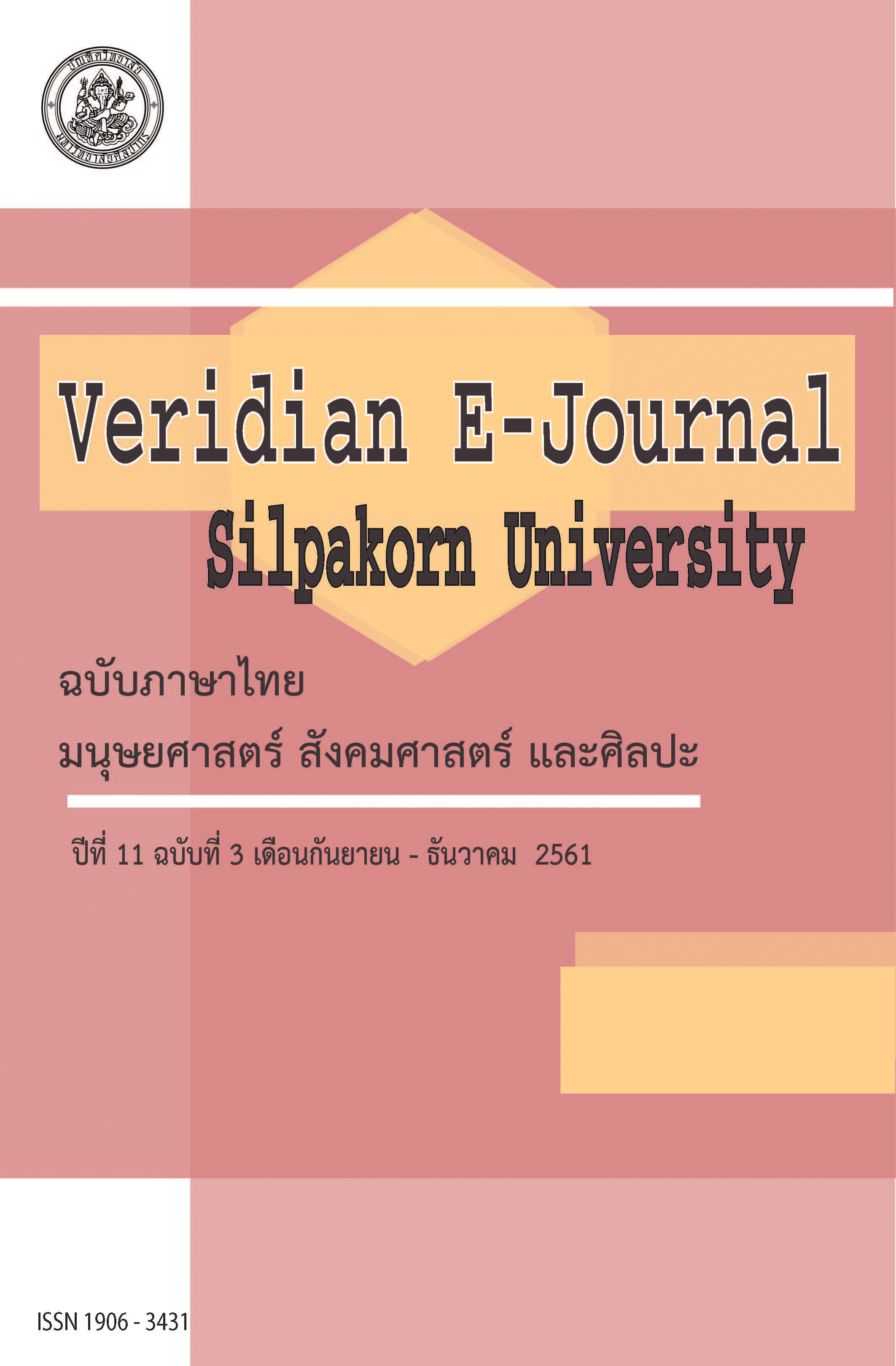วิถีการเรียนรู้กับการบริหารศูนย์การเรียนชุมชนธรรมชาติบ้านห้วยพ่าน (Ways of Learning with Administration of the Ban Huay Pern Natural Learning Community Center)
Main Article Content
Abstract
การศึกษาครั้งนี้ได้เป็นการวิจัยเชิงคุณภาพ (Qualitative Research) มีวัตถุประสงค์เพื่อ 1) ศึกษาการดำเนินงานบริหารศูนย์การเรียนชุมชนธรรมชาติบ้านห้วยพ่าน และ 2) เพื่อศึกษาวิถีการเรียนรู้ของนักเรียนในศูนย์การเรียนชุมชนธรรมชาติบ้านห้วยพ่าน โดยดำเนินการเก็บข้อมูลดังนี้ 1) การสัมภาษณ์อย่างไม่เป็นทางการกับผู้ให้ข้อมูลหลักจำนวน 24 คน 2) การสังเกตขณะเข้าร่วมกิจกรรมของศูนย์การเรียนและกิจกรรมของชุมชนพร้อมทั้งจดบันทึกเหตุการณ์ที่เกิดขึ้นขณะที่อยู่ในพื้นที่วิจัย ตรวจสอบความถูกต้องของข้อมูลแบบสามเส้า จากนั้นจึงนำข้อมูลวิเคราะห์ตีความแล้วนำเสนอเชิงพรรณนา
ผลการศึกษาพบว่าเนื่องมาจากสถานศึกษาของภาครัฐตั้งอยู่ห่างไกลจากชุมชน ภาระค่าใช้จ่าย
ด้านการศึกษาและการเดินทาง ความรู้ที่แปลกแยกไปจากวิถีชีวิตของนักเรียน เหตุปัจจัย เหล่านี้ทำให้ชาวบ้านรวมตัวกันในนาม “องค์กรชุมชนบ้านห้วยพ่าน” ยื่นขออนุญาตจัดการศึกษาให้กับบุตรหลานในชุมชน จนกระทั่งได้รับอนุญาตให้จัดการศึกษาขั้นพื้นฐานในสถานศึกษาอีกรูปแบบหนึ่งที่เรียกว่า “ศูนย์การเรียน” ซึ่งในการจัดตั้งและการดำเนินงานบริหารศูนย์การเรียนมีปัจจัยและเงื่อนไขที่สนับสนุนให้เกิดความสำเร็จ คือ บริบทของชุมชน ผู้นำชุมชน และการร่วมมือ ในส่วนของการดำเนินงานนั้นมีการดำเนินการจัดการศึกษาตามบทบาทหน้าที่ของศูนย์การเรียนตามที่กฎกระทรวงได้กำหนดไว้ และดำเนินงานบริหารศูนย์การเรียนตามขอบข่ายของการบริหารสถานศึกษาขั้นพื้นฐานในด้านต่าง ๆ ประกอบด้วย การบริหารวิชาการ การบริหารบุคลากร การบริหารงบประมาณ และการบริหารงานทั่วไป สำหรับการจัดการศึกษาของศูนย์การเรียนมีการจัดการเรียนการสอนในเนื้อหาสาระตามหลักสูตรแกนกลางการศึกษาขั้นพื้นฐาน และมีการเรียนรู้ที่สัมพันธ์กับวิถีชุมชนผ่านกระบวนการจัดการเรียนรู้โดยใช้ปัญหาเป็นฐาน นอกจากการเรียนรู้ที่ศูนย์การเรียนแล้วนักเรียนยังได้เรียนรู้จากครอบครัวและจากวิถีชุมชน ทั้งหมดเป็นการเรียนรู้โดยการปฏิบัติร่วมกับผู้อื่นทั้งครูและเพื่อน ๆ ในศูนย์การเรียน คนในครอบครัวและคนในชุมชน หรือเรียกว่า “การเรียนรู้ในวิถีชีวิต”
This research is qualitative and has the following objectives are; 1) to investigate the administration of Ban Huay Pern Natural Learning Community; and 2) to investigate the learning ways of students at Ban Huay Pern Natural Learning Community. The data were collected in two ways; 1) twenty-four primary informants were interviewed informally; and 2) observations conducted during the participation of the researcher in both activities the learning resource center and the community; and that the events which occurred in the research area would be noted. The data were then assessed for accuracy by means of triangulation, analysis, interpretation, and presented descriptively.
The results revealed the following: Due to the long distances between public schools and the community, travel expenses and the knowledge taught in the schools which may differ from the lifestyles of the student, cultures changes and the social values of local children and teenagers began to develop. As a result, the locals assembled and established “Ban Huay Pern Community Organization” and proceeded to apply for a permit to provide local education for their children locally. An institution for Non-Formal and Informal education, also known as “The Learning Resource Center” was successfully established in the community. Since then, the Learning Resource Center has become an alternative for local students to study, other than traditionally going to public schools. As for the establishment and administration of Ban Huay Pern Natural Learning Community, including aspects such as the community, the leader and the cooperation of locals were the keys to its success. After the Ban Huay Pern Community Organization was granted a permit to provide their students with primary education, the body has consistently performed their duties and administered the Learning Resource Center in accordance with general regulations set for primary school administration. In order to standardize and assure the quality of the courses provided, The Learning Resource Center is administered under four departments: academic, human resources, budgeting, and general administration. The Learning Resource Center provided their students with learning activities for subjects in accordance and the learning courses that correlated with community lifestyle through PBL (Problem Based Learning.) In summary, the students were provided with three styles of learning: the learning of courses provided by the Learning Resource Center, experiential learning from their family and experiential learning from their community. The learning resulted from the participations of students with teachers, classmates, family members, and locals, which are also known as “learning in way of life.”

